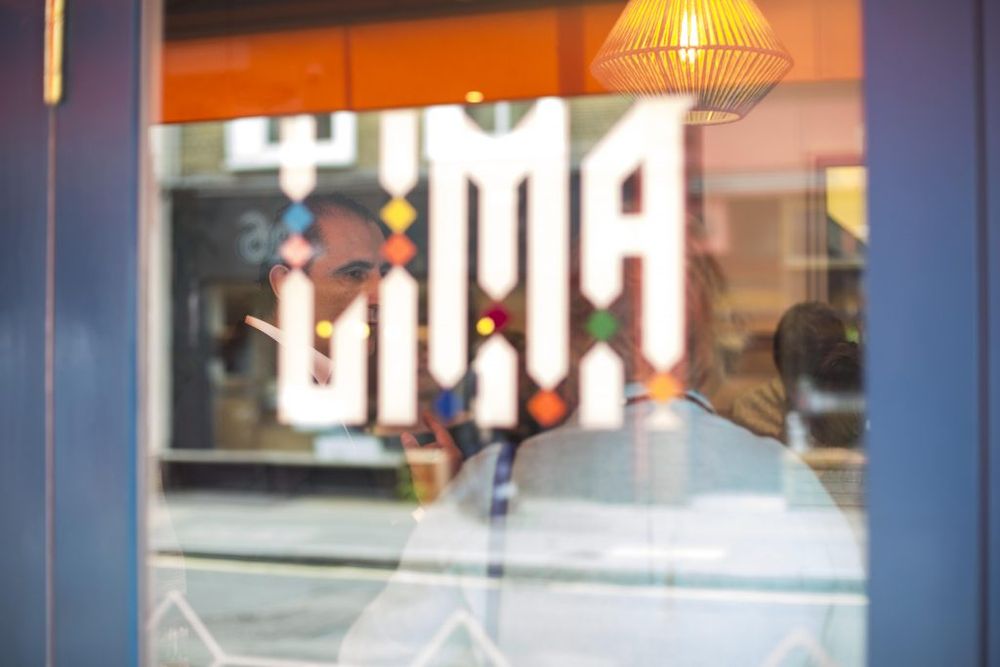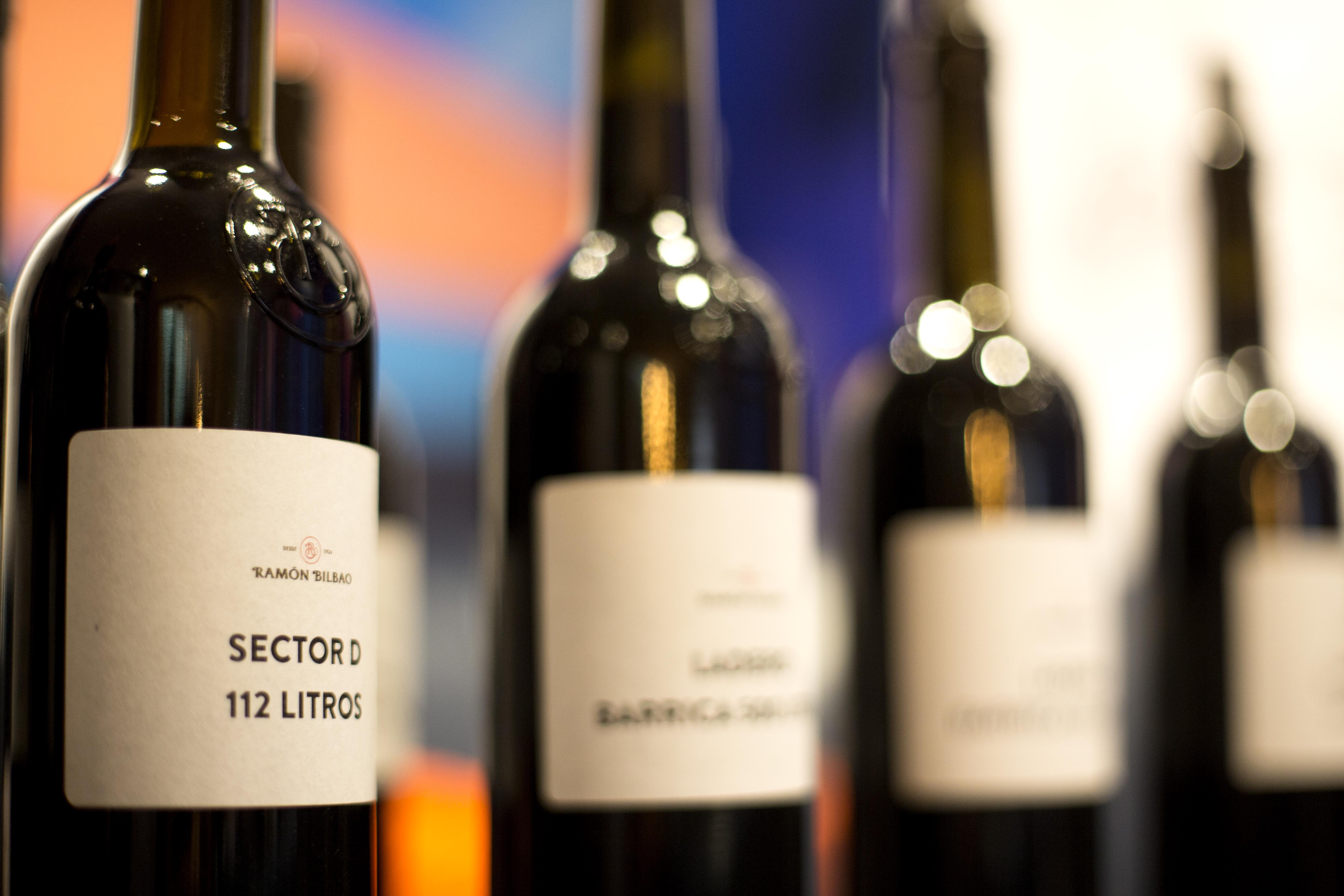It is not just freshness that altitude brings to a wine, it specifically alters the grapes in terms of phenolic characters, the balance of sugars and acidity.
Pouring, tasting, spitting, processing, making notes… re-tasting, spitting, re-processing, making notes… wine tasting can be hard, repetitive work. But someone’s got to do it, right… and everyone’s a comedian when you tell them what you’ve been up to and why your tongue and teeth are mauve.
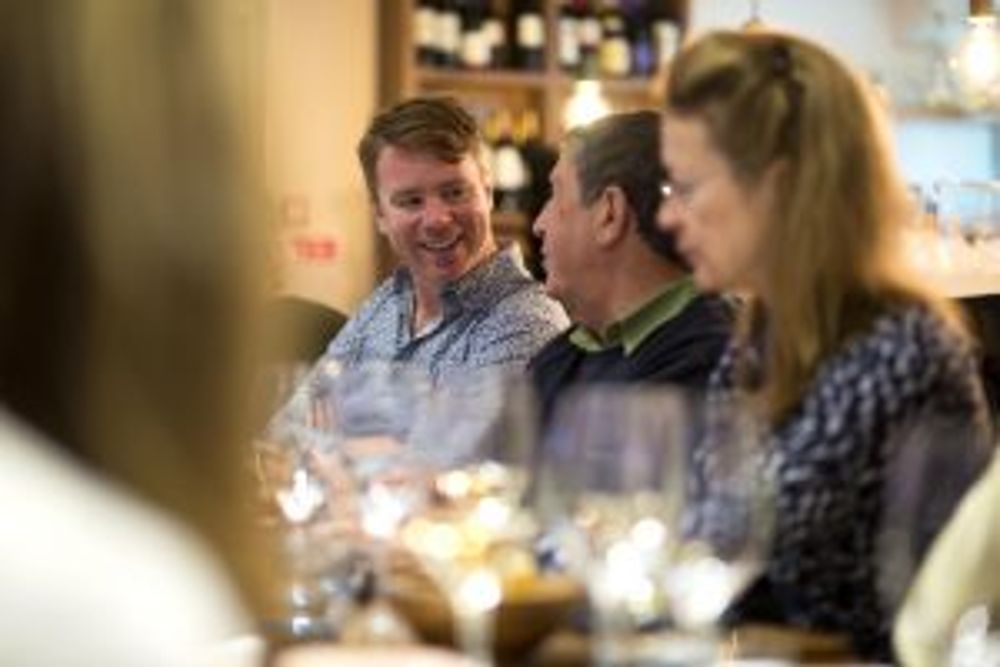
Chris Wilson (l) at the coal face
Okay, so it’s not exactly life at the coal face, but it can – at times – seem like hard work. This was one of those times, and not because the wines were unpleasant or difficult. Quite the opposite, they were delicious, unique, eye-opening, but… but they were raw and unfinished (some a long way from being finished) so there was a disconnect in the brain between what was expected from each taste, each re-taste.
This type of tasting – confronted by barrel samples of wines that are very much still on their journey – involves a lot more thought than is sometimes the case. This is the ability not only to draw on the experience vault of previous wines tasted but also to gaze into the crystal ball and imagine what the wine might taste like in years to come once it’s been blended: with a bit of Sample A, a glug of Sample B, and a hint of Sample X (which hasn’t even been made yet, hell the grapes are still on the vine).
So, yes, it was hard work, but utterly rewarding.
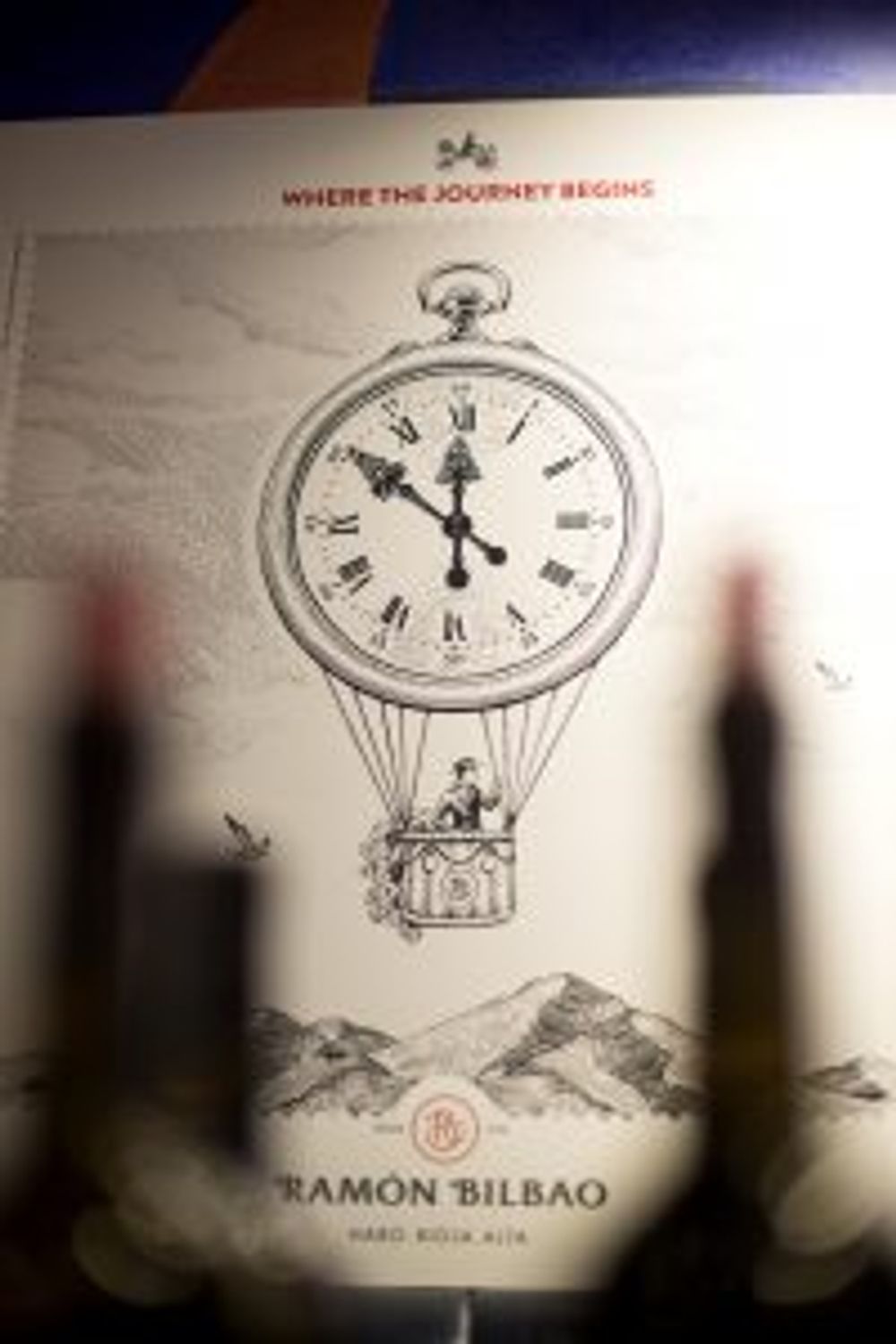
The tasting was titled ‘Ramón Bilbao’s Adventures With Altitude In Rioja’ and was a chance for the famous Rioja stable to talk about the diversity of the wines that go into its Riojas, specifically focusing on altitude and the differences offered at many of its vineyards, including the recently acquired vineyards high in the Monte Yerga in Rioja Baja.
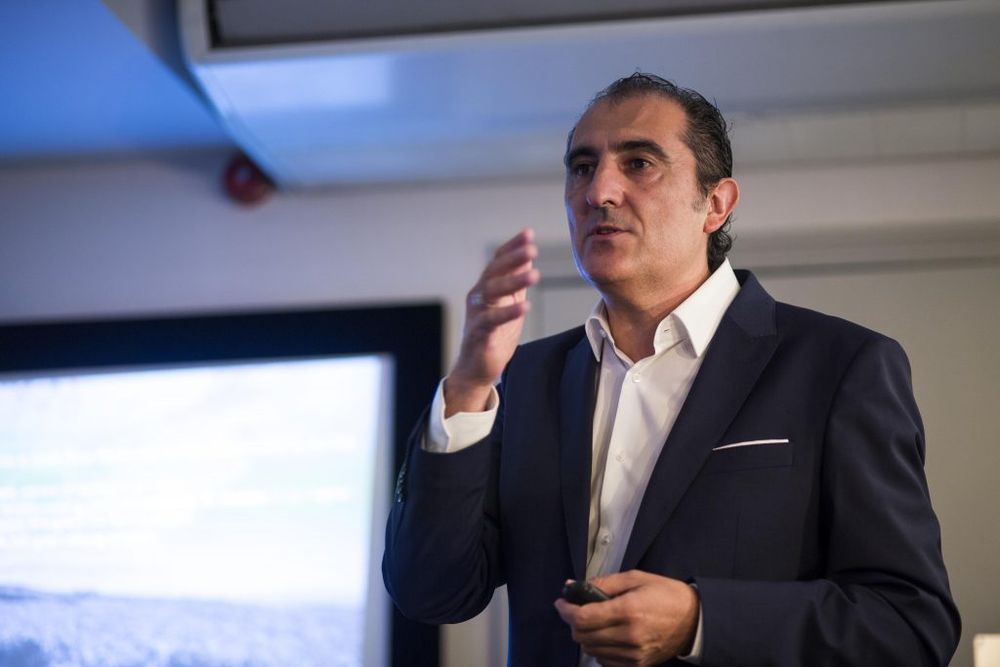
Rodolfo Bastida
Winemaker Rodolfo Bastida hosted the event and told the stories and quirks of each site as we tasted the component parts of future Ramón Bilbao Riojas. All wines were from 2016, a vintage he described as “one of the best vintage in recent years”.
As he guided us through the labyrinth of developed and un-developed flavours and characteristics of each wine Bastida spoke at length about why experiments into the specific organoleptic and chemical differences of wines from different vineyards and altitudes was so important to him and Ramón Bilbao.
His mission is to plot each vineyard and parcel in detail through vigorous and repeated micro-vinifications so that the terroir of each plot is better understood and that this information can inform future blends. What we had in our glasses was part of this process, and we had nine unique wines to sample from vineyards right across La Rioja, and ranging from 520-720m above sea level.
What altitude offers, argued Bastida, is significant diurnal temperature shifts which bring freshness to the wines; “the first steps in defining our style,” he says. But he’s also interested in what else altitude does to the grapes, such as what effects it has on the berry. How does it alter phenolic characters and the balance of sugars and acidity, for example.

This is very much a work in progress but what we know so far from the work that Bastida has carried out is that higher altitude vineyards produce grapes with more anthocyanins, tannin and colour as well as thicker skin due to higher levels of UV light. The grapes retain more acidity at higher altitudes and have a lower redox potential, which gives them greater capacity for ageing.
All of these discoveries help to shape the viti and vini processes and the final blends of each wine produced by Ramón Bilbao, and it’s clear that this is a life’s work. It was a pleasure to play a small part in this journey and offer up thoughts and opinions on a selection of the wines tasted.
Below are notes from the tasting – the wines are listed by grape, vineyard and altitude.

Tempranillo Ábalos – 700m
Rich chocolate cake nose leading to banana chip and wet towel on the palate. Plum and red fruits, but muted. There’s a long way to go for this wine and Bastida says it’s un-racked and will benefit from more time in oak to crisp up the tannins and further enhance the oak (cigar) characters.
Garnacha Tudellia – 650-700m
Moist rolling tobacco and demerara sugar on the nose as well as a hint of morning mist. This is very savoury with duck fat, pink peppercorn and iodine to balance the black fruit and gateaux characters. Smoother than the Tempranillo, less aggressive.
Tempranillo Villalba – 650m
Bold with dark chocolate, dried herbs and tomato leaf. Less punchy on the palate than the nose suggests but still big with floral (violet) and red fruits. Very young with keen, sticky tannins.
Tempranillo Monte Yerga A Sector – 520m
“From this 66 million-year-old site you can see the Pyrenees,” says Bastida, a little misty-eyed. It’s a windy site and the Atlantic influence dictates that bush vines are planted. The wine is bright with a vivid purple hue and much more immediate fruit than the first three wines; damson, cherry, raspberry. This could be a finished wine but for the youthful colour and spirit-y nose, which will soften with more time in French oak.
Tempranillo Monte Yerga D Sector – 540m
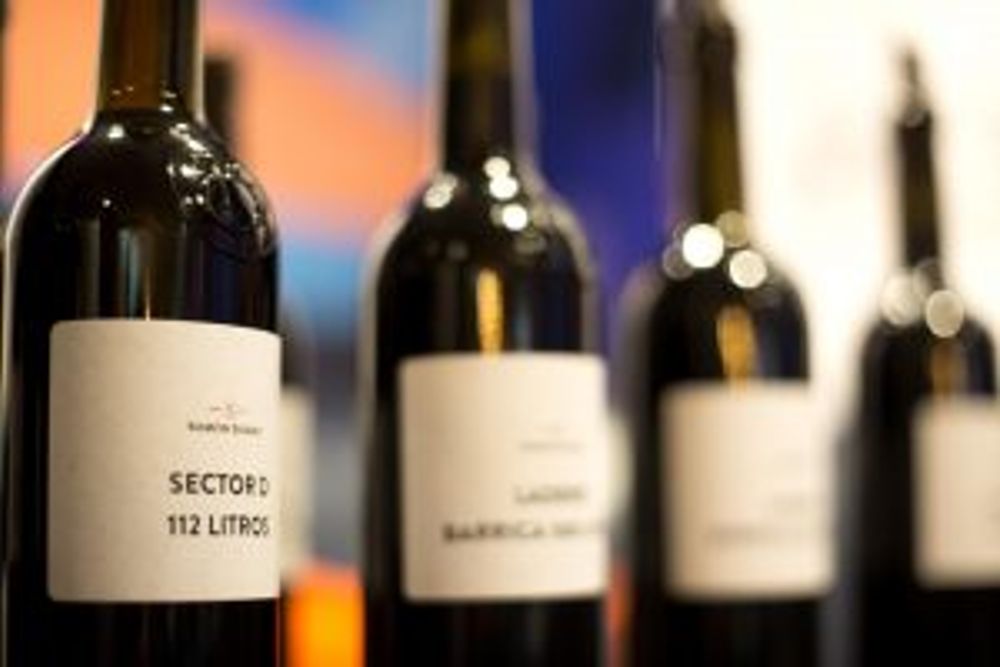
This wine and the next one are from the same sector of the same vineyard so share altitude, soil, aspect etc, and have been vinified in the same fashion. The key difference is that they are being aged in different sized barrels; both French oak, this wine in 225L barrels, the next wine in 112L barrels. There’s smoke, herbs and black olives here as well as sweet, ripe red fruit and full, chewy tannins. The oak influence is there but it’s subtle.
Tempranillo Monte Yerga D Sector – 540m
The smaller barrels and significantly larger wine-to-oak ratio is clear from the first sniff. There’s vanilla on the nose and the palate and it’s already a much smoother wine. The plum fruit is way at the back, and there’s iodine and green pepper too. Very full on.
Tempranillo Monte Yerga Ladero – 720m
From tiny barrels to big ones, this wine has spent nine months in 500L new French oak barrels and you can tell. The fruit notes are elevated and the tannins more angular, less integrated. There’s cherry and raspberry as well as liquorice. Very well made and you can see this developing into a great wine.
Tempranillo Monte Yerga Ladero – 720m
Lovely integration of fruit and tertiary characters but the tannins still need to be tamed over time. This wine comes from a 225L barrel and is still a baby. On the process of barrel experimentation, Bastida says: “If you have more colours in your palette you can paint a more detailed picture.” It’s all about the art of the blend.
Tempranillo-Garnacha Monte Yerga G Sector – 600m
The final wine of the tasting was also the most complete. Sumptuous, mouth-filling and smooth with great length and delicious plum and blackcurrant fruit. The tannins were on song with the fruit and there was a rounded complexity to it. It was the only blended wine tasted, so maybe that’s a clue to how the great wines of Riojas are so mesmerising because they surpass the sum of their parts….?
